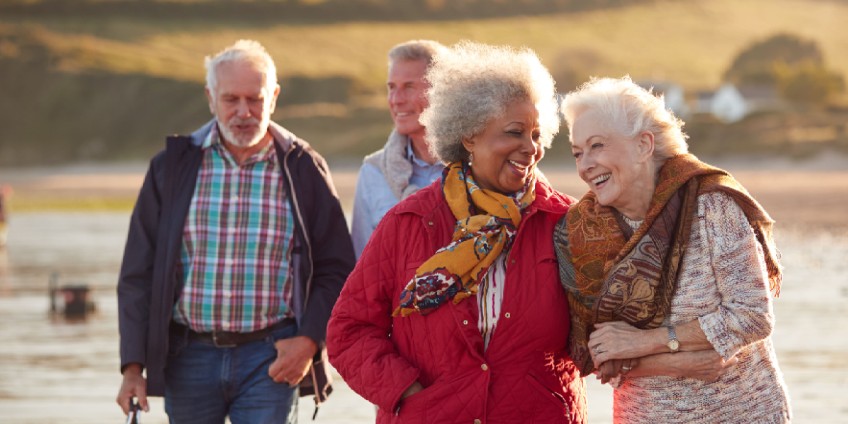Significant numbers of nursing home residents could return home to normal living if they received the following therapies—
- restoration of the body’s soft tissues
- training in correct breathing
- training in safe exercise/movement for older adults.
Good musculoskeletal function can be restored with movement therapies and manual therapies. The sad part is that most nursing home residents cannot avail themselves of these therapies for two reasons: lack of money to pay for services and lack of transportation to the services.
The solution is to learn and practice these therapies long before your elder years. Prevention is always the best solution. No one is ever too young or too healthy to start maintaining the health of the musculoskeletal and myofascial systems. Everyone who hopes to stay out of a nursing home should begin using these therapies before age 50.
- Healthy fascia (connective tissue) is by nature–
- Elastic: It resumes normal shape after being stretched or compressed
- Flexible: It is supple and pliant
Healthy fascia can help a body function better even when mild to moderate osteoarthritis is present in joints. Both fascia and muscles should be given therapeutic exercise to maintain flexibility. Strength and weight-bearing exercises should be practiced daily to maintain strength of bone and muscles.
The only time when the fascia (connective tissue) cannot be restored is when a connective tissue disease is present. Age alone does not interfere with the possibility of restoring the body’s fascia to a more supple, pliant condition. All that is needed is:
- Myofascial therapy to restore the fascia
- Daily practice of therapeutic movement
In an older adult, restoration of the fascia by a skilled manual therapist will take more time than in a younger person. Also, the application of treatments must be gentle. So, a few more therapy sessions will be needed. Once the fascia is restored to a more youthful, supple condition, myofascial therapy should be received several times per year to maintain health of the tissue.
Most of us are resigned to growing old, losing strength, becoming grossly stiff and ending-up in a nursing home–right? Back in the 1970’s, in Philadelphia, Dr Joan Sloss worked with senior citizens who were needing assistance to stay in their homes. These older adults, age 65-80, were given 2 sessions per week of safe, therapeutic exercise. Amazing things happened. Individuals no longer needed walkers for balance. People returned to bathing themselves and cooking for themselves. Medications were reduced.
Dr Joan was aware that professionals and teachers in the field of therapeutic movement personally maintained healthier, supple bodies until death. These included well-known teachers of Bartenieff Fundamentals, Feldenkrais Movement Therapy and other forms of Movement Therapy Training.
These pioneers of movement therapy techniques proved that prevention of age-related motor dysfunction is possible. It is best to start a program of therapeutic movement early in life, and maintain it as long as possible. But you can start a program of therapeutic movement later in life, even after disabilities have appeared, if you prepare the body with myofascial therapy.
Almost all nursing home residents have some type of physical disability that interferes with activities of daily living like cooking, bathing, shopping and cleaning. Many people could remain safely at home, able to do chores of daily living, if only they had–
- More muscle strength
- More resilience and elasticity of the fascia that supports every bone, organ, nerve and muscle of the body
- Most people grow weaker one day at time. As we age, we do not maintain our strength unless we exercise correctly and frequently. The big mistakes that people make with their exercise program are–
- Doing a limited number of exercises leaving much of the body without needed movement
- Believing that daily chores count as therapeutic exercise when daily chores alone will not maintain strength or flexibility
- Thinking that sports alone will maintain health of fascia when most sports strain the fascia
People over the age of 50 who do not exercise for strength, flexibility and endurance will go downhill faster than they think. All older adults need to exercise to maintain core strength (spinal muscles, abdominal muscles, pelvic muscles, buttock muscles). We also need to maintain strong shoulders, arms and legs. And we need to maintain strong breathing muscles (diaphragm and intercostals).
Few people really want to live in a nursing home. So why don’t we do the things that will keep us out? Too many people stop exercising because exercise causes pain. The solution to this is to use the services of a qualified myofascial therapist.
A myofascial therapist can better integrate your body by balancing the muscle groups and by restoring the connective tissues. Myofascial therapy is safe and effective for many older adults and is not very painful when correctly done. Myofascial therapy is effective at preparing the body for exercise.
Once you can exercise safely without pain, you will enjoy exercise and the benefits it brings. It is always best to begin your exercise program under the guidance of a professional trainer who specializes in training older adults. If you have major health challenges, you will want to choose a physical therapist to guide your training.





